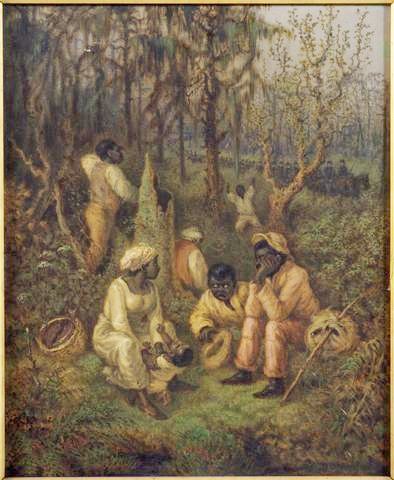
Music of the Spirituals 1
From a musical standpoint, an all-encompassing description of spirituals is an even more tricky proposition. Precisely what the melodies of the spirituals sounded like is elusive at best, particularly in the days before the Civil War. Despite meticulous examination of travel accounts, missionary reports, letters, memoirs, fiction, newspapers, and slave narratives, researchers such as Dena J. Epstein can only offer fragmentary descriptions that provide exciting clues about the sacred music of slaves (Epstein 1977, 225). Epstein's sources before the Great Awakening of 1740 almost invariably feature clergymen and missionaries that denounce slaves' ''idolatrous'' singing and dancing on Sunday. Still, they say little of how this ''idolatrous'' music sounds (Tucker 1816, 29-34).
"The dark waters of music theory are tricky even for trained musicians, but a few observations may be helpful as long as the listener remembers that when it comes to spirituals, like W.E.B. Du Bois (1868-1963) writes, ''The songs are indeed the siftings of centuries; the music is far more ancient than the words . . .'' (Southern 1983, 205) and not always translatable by Western-trained musicians.
Jon Michael Spencer and others write that the primary melodic mode used in the transcribed spirituals is pentatonicA scale of five tones. It is used in African, Far Eastern, and Native American music. The pentatonic scale has been used in 20th century compositions as well. , even though some spirituals only use a portion of the scale (Spencer 1987, 2-3). This observation, however, must be viewed considering the prejudices of musicians schooled exclusively in European-styled conservatories. Typically, the majorTerm referring to a sequence of notes that define the tonality of the major scale. This series consists of seven notes: the tonic, followed by the next note a whole step up from the tonic, the third is a whole step from the second, the fourth is a half step from the third, the fifth is a whole step from the fourth, the sixth is a whole step from the fifth, the seventh is another whole step, followed by the tonic, a half step above the seventh. Thus the first and eighth tones are exactly an octave apart. and pentatonic scales produce lighter, more upbeat melodies. But contemporary accounts indicate that many spirituals instead sounded melancholy and apparently in a minorA series of tones that defines a minor tonality. key-or something altogether different. William Francis Allen struggled to capture the music of the spirituals. He wrote that their melodies are hard to unravel because they frequently strike sounds that the rangeThe scope of notes that an instrument or a voice can produce. Also, the scope of a composition, from the lowest note to the highest. A narrow range has fewer notes between the highest and lowest pitch while a wide range has many notes between the highest and lowest pitch. of Western sounds cannot precisely represent, and abound in "slides from one note to another, and turns and cadences not in articulated notes" (Allen et al. 1995, vi).







